Boost Bone Health with SR CarnoSyn®
Maintaining bone health is an important component of healthy aging, as bone fractures are directly linked to osteoporosis in older adults. In the US, annual incidence of bone fractures in women exceeds that of stroke, breast cancer, and heart disease combined.1 A hip fracture, for example, can be especially debilitating: roughly 40% of those suffering hip fracture require nursing home care and 20% will never walk again.
Beta-alanine can play a role here. One animal study showed that supplementation with beta-alanine can prevent decreases in femoral ash content and mineral density.2 And, fibroblasts cultured with carnosine showed markedly developed protein filaments as compared to control.3 The benefits of beta-alanine supplementation are often boosted by zinc, with studies showing that the combination can increase bone formation in post-menopausal women with rheumatoid arthritis4 and increase protein and collagen expression.5
Multi-Layer Protection
Exercise and physical activity are good for just about everyone, including older adults. No matter your health and physical abilities, you can gain a lot by staying active. In fact, studies show that “taking it easy” is risky. Often, inactivity is more to blame than age when older people lose the ability to do things on their own. Lack of physical activity also can lead to more visits to the doctor, more hospitalizations, and more use of medicines for a variety of illnesses.6,7
The link between muscle health and bone health is well-established, with research showing that age-related declines in muscle size and quality are thought to contribute to the breakdown of bone over time. The opposite is also true, with age-related changes in bones also profoundly altering their response to stimuli through the muscles.8 What does this mean for carnosine and beta-alanine, which have a proven track record for supporting muscle health?
Direct Protection and Stimulating Bone Growth
Research suggests dietary carnosine might affect the glycation of bone proteins and be therapeutic in terms of bone loss. How? Some studies have suggested carnosine when complexed to zinc stimulates osteoblasts (which are active in bone formation) and suppress osteoclasts (which are involved in bone resorption).9
Carnosine may have other roles in supporting bone health. One study examined carnosine’s effect on rat fibroblasts (i.e., the cells that provide the structural framework for tissues). Researchers cultured the fibroblasts in the presence and absence of carnosine for one week. What they found was that, while a number of cellular proteins changed their expression levels with the addition of carnosine, one of the most prominently varied proteins was vimentin, a protein required to maintain bone integrity.10 This suggests that carnosine can indeed support bone health beyond its tangential support of the muscles.
REFERENCES
1Novotny S et al. “Aging and the muscle-bone relationship.” Physiology, vol. 30, no. 1 (January 2015): 8-16
2Kishi S et al. “Histomorphological confirmation of the preventive effect of beta-alanyl-L-histidinato zinc on bone loss in ovariectomized rats.” Biological and Pharmaceutical Bulletin, vol. 17, no. 6 (June 1994): 862-865
3Ikeda D et al. “Carnosine stimulates vimentin expression in cultured rat fibroblasts.” Cell Structural Function, vol. 24, no. 2 (April 1999): 79-87
4Sugiyama T et al. “Improvement of periarticular osteoporosis in postmenopausal women with rheumatoid arthritis by beta-alanyl-L-histidinato zinc: a pilot study.” Journal of Bone and Mineral Metabolism, vol. 18, no. 6 (2000): 335-358
5Takada T et al. “Effect of beta-alanyl-L-histidinato zinc on the differentiation of C2C12 cells.” Life Sciences, vol. 76, no. 5 (December 2004): 509-520
6National Institute on Aging. “Exercise and physical activity.” Accessed at: https://www.nia.nih.gov/health/exercise-physical-activity
7National Institute on Aging. “Real-Life Benefits of Exercise and Physical Activity.” Accessed at: https://www.nia.nih.gov/health/real-life-benefits-exercise-and-physical-activity
8Novotny S et al. “Aging and the muscle-bone relationship.” Physiology, vol. 30, no. 1 (January 2015): 8-16
9Hopkiss A, “Carnosine and Its Possible Roles in Nutrition and Health,” Advances in Food and Nutrition Research, Vol. 57 (2009).
1028. Ikeda D et al. “Carnosine stimulates vimentin expression in cultured rat fibroblasts.” Cell Structural Function, vol. 24, no. 2 (April 1999): 79-87






